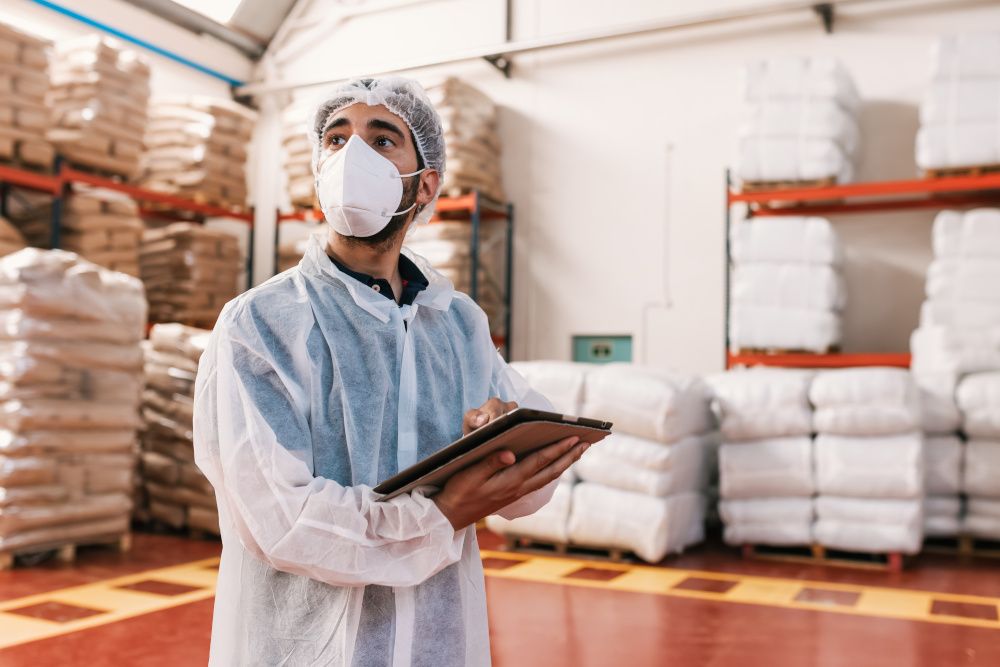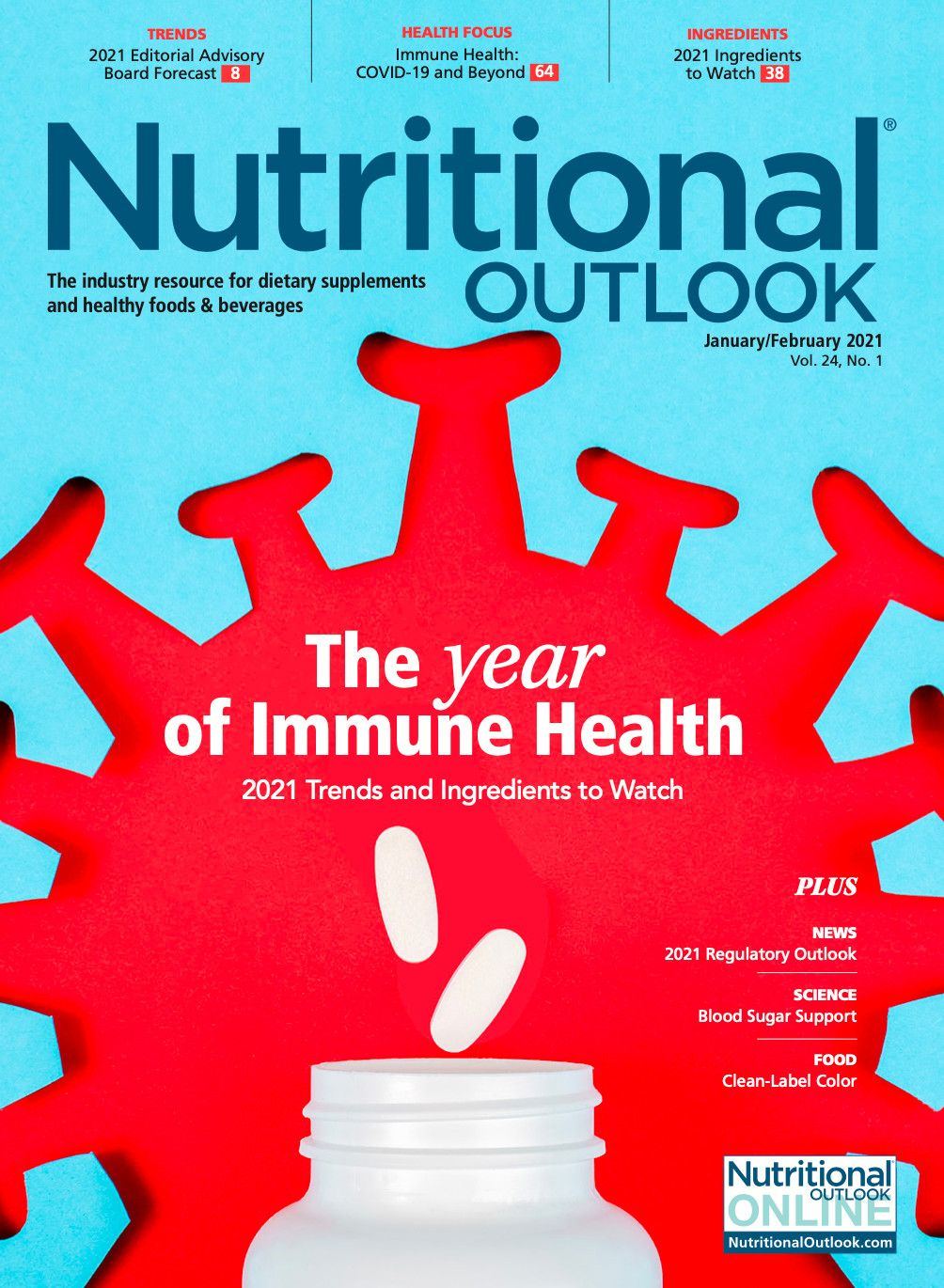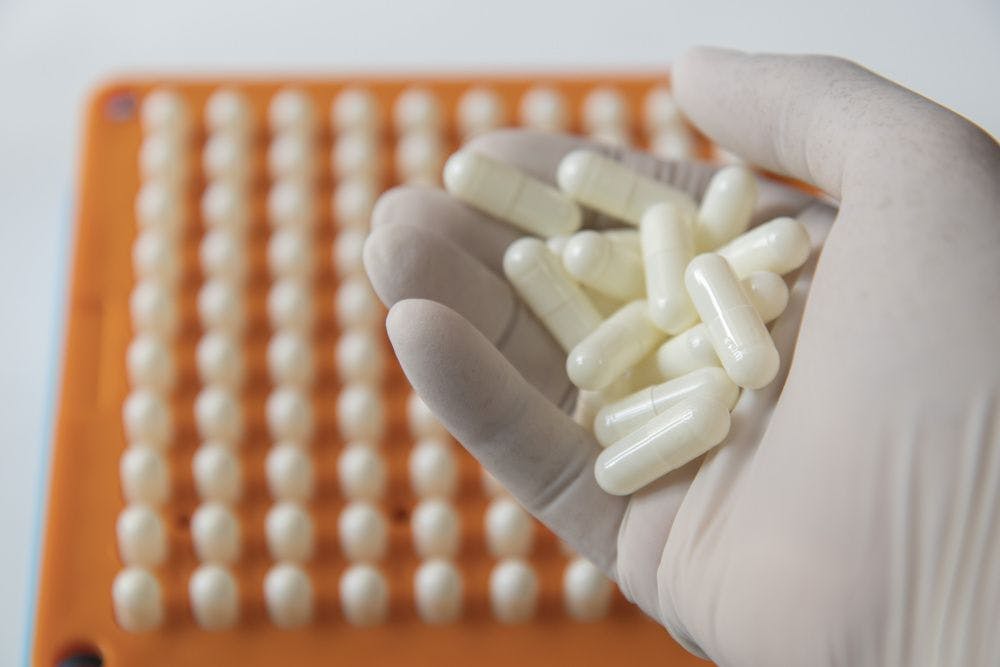COVID-19 required dietary supplement manufacturers to reassess their production lines and equipment
Skyrocketing output and social distancing were some of the major challenges production equipment helped companies conquer in 2020. What will 2021 look like?
Photo © Dani - Stock.adobe.com

The COVID-19 pandemic electrified sales of some dietary supplements in 2020, driving items like immune-health products and ingredients like vitamin C to the limits of demand and supply. Manufacturers had to figure out how to drastically increase production—all while keeping their workforces socially distanced.
Some companies turned to contract manufacturers to help them deal with growing production demands. “When the spike came, production facilities were only geared to manufacture at a certain level,” explains Ed Wyszumiala, director of market development, verification programs, U.S. Pharmacopeia (USP). “Also, a lot of manufacturers had to cut back and scale back their operations to enhance for social distancing…[W]e saw a lot of companies have a reduced capacity due to COVID concerns. ‘Okay, maybe we can only manufacture at 80%, and now we’re looking at 120% to 150% of material that we need to have.’ So there was a lot of utilization of additional contract manufacturers to help keep up with the need.”
Although raw-material shortages were many manufacturers’ primary roadblock at the start of the pandemic, manufacturers also had to address any facility changes needed to keep production running as smoothly—and safely—as possible.
Having the right equipment in house was key to ensuring that companies, including contract manufacturers, could handle higher output. At the same time, social-distancing needs slowed production lines—and this is where equipment helped to make up the difference.
Automating and Reconfiguring
Not surprisingly, automation became critical for social distancing. “We needed to automate as many areas as possible and use more convey systems to spread out the manufacturing operation,” explains Bart Child, chief commercial officer for Nellson (Anaheim, CA), a co-manufacturer specializing in the nutrition bar and functional-powder space. “As an example, we had a very manual process to do large packouts at one of our facilities where a lot of people worked in close proximity. So, we automated the process to manage effectively.” Automation and specialty equipment, he says, helped “eliminate congested manual labor areas” such as these.
Mark A. LeDoux, chairman and CEO of contract manufacturer Natural Alternatives International Inc. (NAI; Carlsbad, CA), echoes that need. “One endeavor we have undertaken is to continuously look for means of automating highly repetitive processes which have been labor intensive in limited space so as to greatly reduce the potential for exposure in case one or more persons have been infected but who may be asymptomatic. To that end, our engineers have designed robotic interfaces for some packaging functions while also deploying artificial intelligence and synthetic vision to evaluate high-speed production and packaging and maintain rigorous quality control.”
Steve Holtby, president and CEO of manufacturer Soft Gel Technologies Inc. (SGTI; Los Angeles), says, “SGTI has automated many of the inspection and packaging processes with new, state-of-the-art equipment, including metal detection, for our customers’ ease of mind. This equipment also makes our processes more efficient and improves our overall product quality.”
The need for automation didn’t start—and won’t end—with the pandemic. And it’s not always feasible to replace certain aspects of production completely with automation. For instance, points out Eugene Ung, CEO of contract manufacturer Best Formulations (City of Industry, CA), while “with COVID, there’s certainly a push to develop processes that require less human contact and interaction—i.e., automation—that’s much easier said than done. Certain products can more easily be automated, while other products require highly trained and skilled operators.”
Manufacturing will continue to be an on-site job. As Holtby says, “Many companies from other industry sectors closed their doors and required employees to work from home, while manufacturers faced the reality that manufacturing requires employees to work on site. People around the globe depend on resilient supply chains and timely delivery of essential products. There is no factory production work from home when it comes to manufacturing softgels and other dietary supplements.”
To make production facilities safer and socially distanced, work areas are also being redesigned. Holtby describes how some of those changes look at his facility. “High-traffic areas in production have signage and floor stickers to maintain six feet between coworkers, where possible. Meetings are held remotely online instead of congregating in the conference rooms. Most nonessential visitors are prohibited from entering the facility. Breakrooms have limited seating, and Plexiglass shields have been placed on the tables. We’ve increased the frequency and depth of our cleaning crews—they wipe down and sanitize high-touch surfaces throughout the day and conduct deep cleanings on weekends.”
Sometimes, the production line itself needed to be changed. “In some of our production areas, we did have to reconfigure the equipment to create safe distancing,” says Ung. “In some cases, we even had to reduce the number of staff that could be on the production line to create safe distancing, thereby slowing down the output for that particular line.” In short, he says, “We had to modify certain manufacturing processes and equipment layout to provide safe distancing within the manufacturing environment.”
Child says that at Nellson, “In order to keep our employees safe and focused on being productive, we had to create separation in all of our phases of production, which includes staging, pre-weigh, blending, and packaging.”
LeDoux says Natural Alternatives International had implemented Plexiglass “decades ago for segregating our packaging functions.” As “one of the few” licensed producers of complementary medicines through Australia’s Therapeutic Goods Administration (TGA), he adds, the company had already implemented high standards and facility controls “to greatly reduce the chances of contamination by airborne particles, in addition to a robust system for checking for foreign materials” in accordance with both FDA and TGA requirements.
In the time of COVID, says LeDoux, “Equipment that limited exposure to multiple people within close proximity of each other was of paramount interest for acquisition in 2020, and frankly even before this pandemic arrived. Labor costs were analyzed, sick-time costs were considered, employee training costs and recurrent training analyses were also evaluated, as was the amount of redundancy in a task which could lead to absent-mindedness and expensive mistakes, and then ROI analytics were run to see what expected payback calendars looked like, before ever signing a purchase requisition or order.”
John Carey, vice president of sales for equipment supplier ACG Engineering, part of ACG Group (Piscataway, NJ), describes how his company, an equipment supplier, saw its customers implement changes. “In order to address worker safety, production lines as well as many other areas in the manufacturing facilities such as gowning rooms, breakrooms, etc., were reconfigured to provide social distancing between workers,” he says.
Testing labs also required social distancing, USP’s Wyszumiala points out. “We didn’t see this problem alone on the manufacturing floors but also in the laboratories where the space is much more condensed.”
Be Prepared
Another equipment-related logistical challenge manufacturers encountered involved replacement parts. Wyszumiala recounts how supply chains for replacement parts for equipment preventative maintenance “got very, very tight.” He says, “A lot of companies were having a hard time shifting materials globally, so getting replacement parts became difficult.” This was true for both production and lab equipment, he says.
Due to the hazard of outside exposure to the virus, having vendors come into one’s facility to repair equipment wasn’t desirable, Wyszumiala says. “If you’re not having vendors come in to do that work, you started to see some of that additional preventative maintenance, or even maintenance if something was broken, taking a lot longer than it would in a normal business environment.”
Remote servicing became key, says ACG’s Carey. “Online remote service and support became a standard offering for equipment manufacturers, both to address the health and safety of their service staff and to address the manufacturers’ desire to minimize the introduction of additional personnel into their facilities. Deployment of online support for process control systems, web-based video conferencing for mechanical troubleshooting, became the primary method of support during the height of the pandemic and has proven itself to be an effective technology, which when properly leveraged can reduce cost and minimize downtime.”
The takeaway lesson has been to stay better prepared, says Wyszumiala, such as “making sure you have spare parts—and those spare parts could be something as simple as tablet punches or gaskets, things that you would normally maybe not keep a 4-6 month reserve for expendable parts,” he continues. “I think you’ve seen a lot of manufacturers try to ramp that up and try to have more of a plan for parts that are more used and thrown away after a period of time after wear and tear than you’ve seen in the past.”
Capital Expenditure
Given all of the challenges of 2020, was investing in additional, new equipment actually a priority for manufacturers? For those who could afford to purchase it was, especially if it helped increase capacity, increase speed, or improve equipment uptime, says ACG’s Carey.
NAI’s LeDoux says his company’s capital investments “remained strong.” Enhancements the company made in 2020 included packaging automation, labeling, desiccant inserters, end-of-line X-ray equipment, blending, and packaging line additions. “We expended approximately USD $6 million in our facilities on planned equipment procurement for the last 12 months,” he says. Based on conversations with “virtually all vendors we spoke with,” he adds, from blending to packaging “it appears most all equipment types are in high demand.”
“From our perspective, there’s certainly an increase in demand for production equipment, partly due to increasing demand for dietary supplements in general and partly due to automation,” says Best Formulations’ Ung. “Additionally, it’s generally easier to get higher-capacity production equipment versus adding additional manufacturing space to increase capacity/output.”
John Ross of Charles Ross & Son Co. (Hauppauge, NY), a supplier of mixing, blending, drying, and dispersion equipment, discusses orders his company saw last year. “We received a large order from a vitamin C manufacturer—a duplicate of their two identical Ross blenders—possibly triggered by market demand due to the pandemic. Another repeat customer, this time a contract nutraceutical manufacturer, bought a new ribbon blender to add to their already substantial fleet.” He reports demand for both ribbon blenders and high-shear mixers, noting “these are standard workhorses.”
ACG’s Carey says his company saw notable demand for encapsulation equipment, tableting machinery, granulation systems, and primary packaging systems. The company also enhanced its machinery designs last year. “Over the course of 2020, ACG Engineering introduced equipment designed to improve productivity and increase production output. Large-capacity tablet coaters and granulation systems were designed and quickly adopted. Sales of encapsulation equipment shifted significantly toward high-speed machines as many nutritional manufacturers increased capacity by adding additional machines or by trading in low- to mid-range equipment for the higher-capacity machines.”
If a company did purchase new equipment in 2020, installing it quickly was a priority. As Carey says, “2020 saw an increased demand for new production equipment coupled with focus on quick implementation to ensure the equipment would be online as soon as possible…For new machinery, many manufacturers gave preference to equipment suppliers with stock machinery or those capable of delivering machinery in weeks rather than months. Equipment upgrades and refurbishments designed to improve uptime or productivity of existing equipment were also approaches implemented by many. Equipment suppliers also saw a tangible increase in the number of equipment maintenance contracts, spare parts orders, all clearly linked to the pressure for production output.”
Many also found equipment renting advantageous. “We found a number of manufacturers pursued a rental option,” says Ross. “ROSS has an extensive fleet ready for immediate shipment. This option allowed customers to minimize the risk of unnecessary assets after the demand surge.”
Ongoing Demand
The elevated demand for dietary supplements won’t end in the near future—and manufacturers will continue reevaluating their equipment needs long-term. Speaking from the contract manufacturer’s point of view, Best Formulations’ Ung says, “At this point, it appears that demand will continue to be robust in 2021 given how long this pandemic has lasted. Manufacturers can always increase output/capacity by increasing production lines or upgrading their existing equipment, but the real bottleneck continues to be raw-material supply chain and logistics. Once the supply chain catches up, manufacturers can increase their output with the upgraded equipment.”
Manufacturers will also need to hedge predictions about whether demand will normalize and whether expensive equipment upgrades will pay off in the long run. Says Ung: “Long-term, it’s always advantageous to invest in equipment, but it depends on a number of factors. If the equipment is higher-output, that typically requires a larger minimum run size, taking into consideration set-up/clean-up time, yield, etc. If the business sees a significant decrease in the size of each order, then that larger equipment may not make sense at all.”
The push for more automation is not expected to lessen post-pandemic. “The changes seen in 2020 are expected to continue as manufacturers seek to grow their business, expand product lines, improve efficiency and reliability of manufacturing operations, and become more competitive through lowering manufacturing costs,” says Carey.
The outlook for equipment investment looks promising, at least from where Ross sits. “Most new equipment sales are for long-term projects of five-plus years,” he says. “The applicable disruptions from COVID were short-term and did not appear to weaken the long-term capital expenditures of the majority of industries we serve.”

Prinova acquires Aplinova to further increase its footprint in Latin America
April 7th 2025Prinova has recently announced the acquisition of Brazilian ingredients distributor Aplinova, which is a provider of specialty ingredients for a range of market segments that include food, beverage, supplements, and personal care.

.png&w=3840&q=75)

.png&w=3840&q=75)



.png&w=3840&q=75)



.png&w=3840&q=75)
























